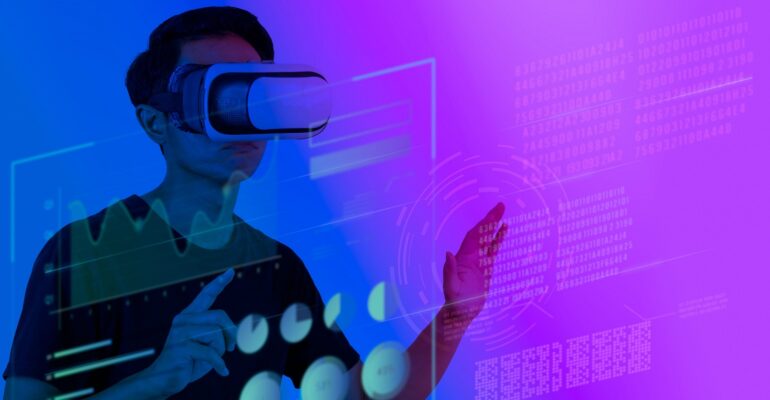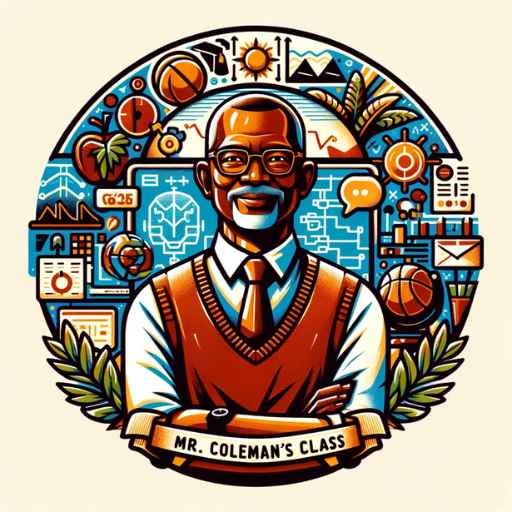Virtual reality typically evokes futuristic connotations, with talk of the metaverse and high-priced headsets feeling distant for most consumers. But in recent years, VR has gained a foothold in an area with far more practical implications: job training.
More and more employers are using VR to train their workers, from store clerks to doctors to jet pilots. While the technology is still in the early stages, the platform has drawn praise for being able to provide trainees with something close to real-world experience, simply by putting on a headset.
“As VR becomes more accurate, I think it will become more and more like a real-world type of learning,” said Adam Puche, a professor of neurology at the University of Maryland School of Medicine. “It will become virtually indistinguishable. The brain is going to learn a task the same in a regular classroom or a virtual classroom.”
The keys to success? When done right, VR advocates say, the immersive training format allows workers to tap into several senses at once — improving their ability to retain information, increasing their comfort level, and giving them a more realistic sense for what their jobs will be like.
One early adopter: Walmart. The retail goliath introduced VR into its training in 2017, and reported a 5 to 10 percent improvement in employee test scores. Now Walmart workers are using it to prep for Black Friday madness, to figure out how to properly clean up a spill, and much more.
Interviews with scientists, researchers and technology experts found that VR is widely seen as a low-risk, high-reward option: a way to hone a worker’s decision-making without costing excess days and dollars. Here are the ways in which they say VR can enhance a worker’s training experience:
VR Is Immersive
In a training created by the VR company Strivr for a beverage distributor, an employee is tasked with properly stocking boxes as they are brought in by a conveyor belt into the back of a truck. Employees use the full 360-degree space around them to complete the task, just as they would on the job. The trainee gets important feedback when they do something wrong or when they do something right.
Virtual reality works by incorporating a moving field of view to mimic the panorama of human vision. Instead of one frame, VR offers dozens of them, requiring the user to rotate their head to see it all. So in a VR training scenario, you see not only the task, but the 3D realm your task is in — a warehouse or a grocery aisle or a cockpit or a trauma ward.
Make no mistake, “just magically putting someone on a headset doesn’t cause more learning,” said Jeremy Bailenson, founding director of Stanford University’s Virtual Human Interaction Lab and co-founder of Strivr. But while VR training isn’t real life, the experience, if built correctly, can be so immersive and responsive that it can make it feel like you’re on the job.
The immersive nature of VR helps in another way: distractions. By putting on the headset, employees have no choice but to stay focused on the task at hand.
“If you’re on a computer, it’s hard to stay focused. Your phone is sitting right there,” said Sarah Murthi, a trauma surgeon who is studying VR applications at the University of Maryland School of Medicine. “When you’re in VR, you’re in that reality. It’s more immersive and less distracting. Your attention is less fragmented.”
VR Helps with Memory
VR training can engage several senses at once, creating what is called a multimodal learning experience. This can prove beneficial in a number of ways — including that it better addresses different learning styles — but most notable is how it can help with retaining information.
Studies show there is better recall and movement when you take off the headset after VR training. If you’re learning with your eyes, your ears, and even your hands and feet, you may be learning — and remembering — in a more complete way.
“Understanding is a combination of our senses and how we move our bodies to experience the world around us,” said Amitabh Varshney, professor of computer science at the University of Maryland.
Training environments could include things like machines beeping in a hospital room, or a patient’s family member who is asking questions — the type of challenges or stressors that a nurse or doctor might face while on the job.
The Mistakes Are Free
One of the reasons employers like VR is that it enables them to pick a specific task — including situations that aren’t as teachable on a laptop screen. If there’s a particular incision that an aspiring surgeon can’t quite grasp, VR can dial that up.
“You could create a very real environment around the person as they’re trying to remember the operation,” Murthi said. “You can create the stressful situation.”
The education works like a two-way mirror in a focus group room: The employer will be able to monitor where trainees are looking and how they are reacting to different stimuli.
And unlike in the real world, a trainee is able to make mistakes without consequences. A medical student, for example, can start over a lifesaving training scenario if their patient dies — without the real-life tragedy. A stressful situation gets less alarming if it’s handled repeatedly. A patient presenting symptoms a doctor hasn’t seen in a while can cause intense anxiety, but VR can bring the comfort of risk-free practice.
“Sometimes you want to create a sense of urgency,” said Kristen Brown, a Johns Hopkins School of Nursing associate professor and Simulation Center simulation strategic projects lead. “You want a little bit of a stress level, because then, you know, when you’re there in real time, you’ve seen this and you’ve done this before.”
The trainings can also allow for interactions that train interpersonal skills — including some involving multiple trainees in the same VR environment, in addition to ones that might not be able to be replicated in real life.
“For our students to have access to a Spanish-speaking patient or a patient with a hearing deficit or a patient who has autism, they might not have the opportunity to ever have access to those kinds of patients,” said Dawn-Marie Dunbar, a product manager at VR training company Oxford Medical Simulation and a longtime educator. “And the only way that we could have them have access to them is by simulation.”
Time and Cost Savings
Why have employers turned to VR? Better performance at lower cost. “Time savings and, therefore, cost savings is the number one [return-on-investment] driver,” said Derek Belch, founder and CEO of Strivr. VR has the potential to offer both. Instead of inviting people to travel to a training for a day or a week, they can offer anytime, anywhere education in 15- or 20-minute sessions. “A medical school whenever you need it,” as Murthi described it.
But the benefits can be seen in other ways. The starkest example came when a gunman killed 23 people at a Walmart in El Paso in 2019. Walmart CEO Doug McMillon said VR training helped save lives, because employees had been prepared by an active-shooter training scenario. “I’ve done it myself,” McMillon told Fortune. “And there’s something about doing that through VR that helps you, in some ways, live the experience and understand the steps that you need to take.”
VR is hardly perfect — as anyone who’s gotten dizzy or sick in a headset knows — but in its ideal state, it could democratize training in a significant way. If VR can deliver on its promise to closely replicate the real thing, teaching can work for someone in a rural classroom as well as it would in an urban lab.
“What we’re seeing is a slow, steady climb in VR use,” said Bailenson, who has worked with VR for 25 years. The increase happens, Bailenson added, “when VR solves hard problems, when it actually earns its keep.”
— Eric Adelson and N. Kirkpatrick, The Washington Post
This content was originally published here.



